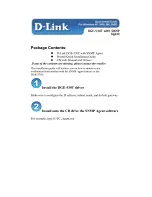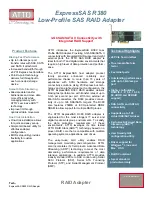
Appendix C: Trouble Shooting
C.1. No Data Transmission
C.1.1. COM Port Settings
Check whether the Baud rate of Parani-SD matches that of its host equipment.
Check whether the host equipment has a Data bit setting of 8. Parani-SD supports only 8 Data bit
settings. If your host equipment uses 7 Data bit and even or odd parity, it may work with a 8 Data bit
and No parity setting. This is valid only when both DCE devices are the Parani-SD. In this case, set
both Parani-SDs to 8 Data bit and No parity. If one of DCE devices is another Bluetooth device such
as Bluetooth USB dongle,7 bit data configurations will not work.
Check whether the Parity and Stop bit of Parani-SD match those of your host equipment. Parani-SD
supports No parity, Even parity and Odd parity, 1 and 2 Stop bit configurations.
Check whether the host equipment of Parani-SD uses Hardware Flow Control. Parani-SD is initially
set to Use of Hardware Flow Control. If your host equipment does not use Hardware Flow Control,
please disable the Hardware flow control option by way of the dipswitch.
Parani-SD does not support RS-232 break signal.
C.2. Data Loss or Malfunctioning
C.2.1. Hardware Flow Control
When transmitting large amounts of data with No Hardware Flow Control, Parani-SD may clear the
data buffer unexpectedly. The possibility becomes greater as the RF transmission environment
becomes worse.
C.2.2. Response Message
The messages of
Parani-SD
response may affect the function of host system. Set ATS10=0 not to send
Parani-
SD
response to host system and try again. Refer Appendix B. for details.
C.3. Transmission Delay
C.3.1. RF Processing Delay
It takes 30msec approximately for a Parani-SD to complete a data transmission to the other Bluetooth
device. This time delay cannot be reduced and may enlarge as the RF transmission environment
becomes worse. Do not use Parani-SD If your applications cannot allow for this time delay.
C.3.2. RF Transmission Environment
If there are many Bluetooth devices working in a small area and/or the RF communication distance is
too great and/or there are some obstacles affecting RF performance, the Parani-SD repeats the
transmission packet by packet due to interferences and/or low RF performance. This may lead to
increased data transmission time delays.



































